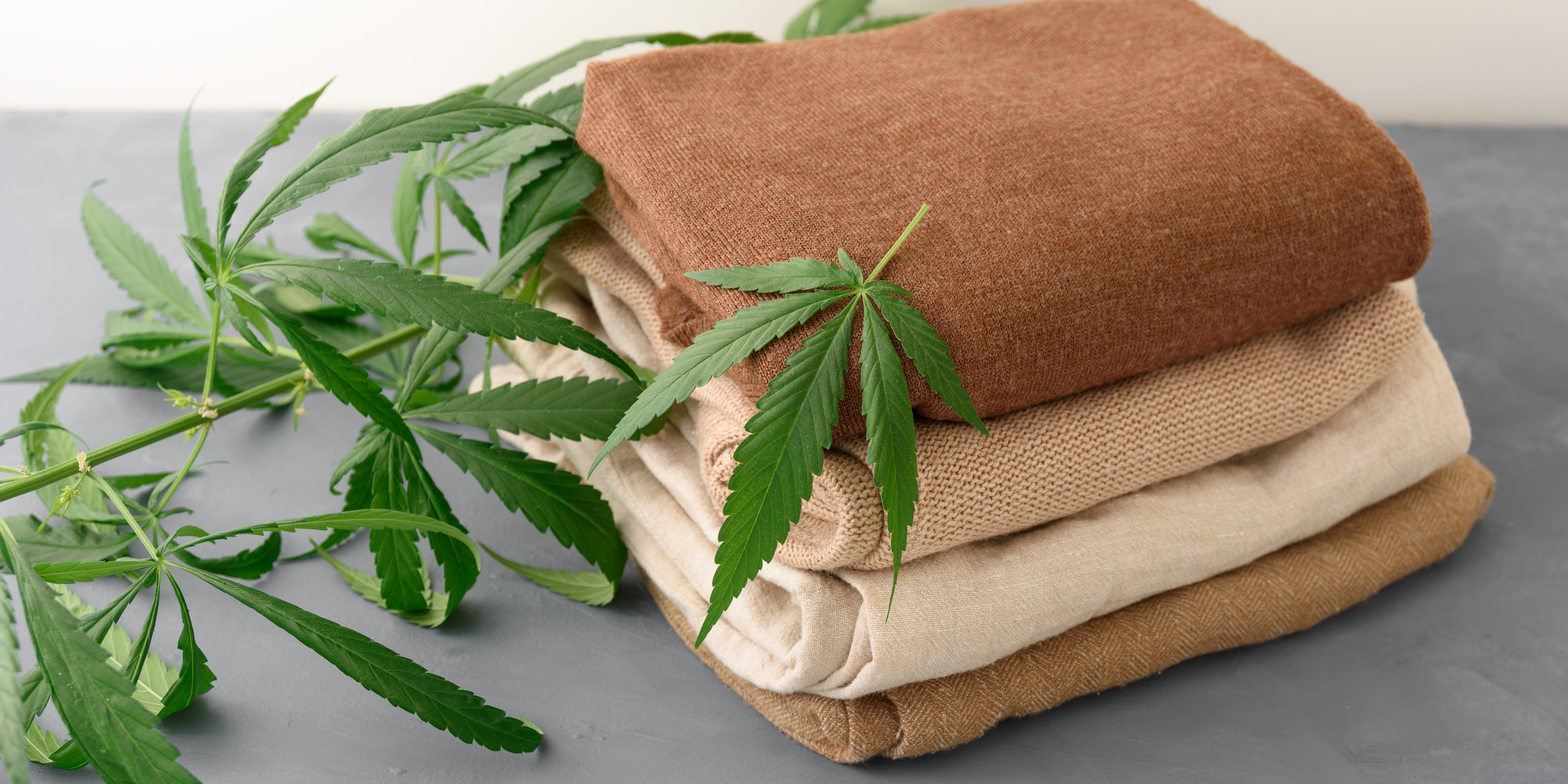How Hemp Fabrics Are Made
From Plant to Fabric: The Fascinating Journey of Hemp fibre Production
Hemp, a multi-purpose crop, has been embraced by textile industries worldwide for its durability, breathability, and sustainability. In recent years, it's made a striking comeback in the world of fashion, upholstery, and more, owing to its reduced environmental impact compared to conventional fibres.
Starting from seed to fully grown plant, the life cycle of a hemp plant lasts roughly four months. Farmers usually sow hemp seeds directly into the soil after the last frost, allowing for optimal growth conditions. Hemp is a robust plant that grows rapidly and is resistant to most pests, meaning it doesn't require much in terms of fertilisers or pesticides. This significantly lowers the environmental footprint of hemp cultivation compared to other fibre crops like cotton.
Once the plant has matured and the flowering stage initiates, it's time for harvesting. The process involves cutting the stalks, typically done with a sickle or a combine, and leaving them in the field for a few days to dry out. It's essential to note that only the stalk of the hemp plant is utilised for fibre production, while other parts like seeds and leaves have diverse applications in food, construction, and cosmetics.
The cultivation and harvesting of hemp are energy-efficient processes. However, challenges such as legal restrictions on hemp cultivation in some countries, and the initial investment required for growing this crop, can sometimes hinder its widespread adoption.
Breaking It Down: Decoding the Retting Process to Extract Hemp fibre
After the harvest, the hemp stalks undergo a process known as 'retting' to separate the valuable fibres from the woody core or 'hurd'. Retting involves using moisture and bacteria to break down the pectins that bind fibres to the hurd. This process can be performed either in the field (dew retting) or in water tanks (water retting).
Dew retting is a more eco-friendly option as it uses natural dew and rain to facilitate the process. However, it takes longer (up to five weeks) and may result in uneven retting. On the other hand, water retting provides more control over the process and produces higher quality fibres, but it requires a significant amount of water and can lead to water pollution if not managed correctly.
Following retting, the stalks are dried and then crushed in a process called 'breaking' to separate the fibres from the hurd. The fibres are then combed in a process known as 'scutching' to remove any remaining woody material and to align the fibres, which is crucial for spinning into yarn.
Despite its eco-friendly nature, hemp retting is a labor-intensive process and requires careful management to ensure high-quality fibre production. Modern technology is being introduced to automate and optimise this process, although the adoption rate varies globally.
Spinning Gold: Transforming Hemp fibre into Fine Yarns for Fabric Production
Spinning is the next pivotal stage in hemp fabric production. The clean, aligned hemp fibres are drawn out and twisted into yarn. Hemp can be spun using traditional spinning wheels or industrial spinning machines. The result is a strong, durable yarn ready to be woven into fabric.
The thickness and texture of the yarn can vary greatly depending on how it's spun, leading to a range of different hemp fabrics. While traditionally hemp yarn was quite coarse, modern techniques have improved its softness without compromising on durability.
Hemp can also be blended with other fibres such as cotton, silk, or synthetic fibres to create composite fabrics. These blends can offer the best of both worlds – the strength and sustainability of hemp combined with the softness and versatility of other fibres.
However, spinning hemp can be more challenging than spinning other fibres. Due to its inherent strength and roughness, it requires special equipment and expertise. Moreover, the choice of spinning technique and potential blending materials can significantly affect the final product's quality, cost, and sustainability.
Weaving Wonders: The Art of Crafting Hemp Fabrics on Looms
Once spun into yarn, the hemp is then woven into fabric. This process involves interlacing two sets of yarn – the warp (vertical) and the weft (horizontal) – on a loom. The characteristics of the final fabric, such as its weight, texture, and pattern, are largely determined by the weaving technique used.
Hand weaving on traditional looms can create unique, artisanal hemp fabrics, but it is a time-consuming process. In contrast, modern mechanised looms can produce hemp fabric quickly and in large volumes, making it more commercially viable.
Regardless of the method, weaving hemp can be technically challenging due to its high strength and low elasticity. The balance between maintaining the durability of the fabric and ensuring it is comfortable and aesthetically pleasing is a delicate one.
Natural Dyeing Techniques: Enhancing Hemp Fabrics with Eco-Friendly colours
Hemp fabric is naturally off-white or cream in colour. However, to meet diverse aesthetic requirements, it can be dyed using either synthetic or natural dyes. While synthetic dyes offer a wide range of vibrant colours, they can be harmful to the environment and the wearer's skin.
On the other hand, natural dyes, extracted from plants, minerals, and even some insects, are eco-friendly and safe. These dyes, combined with mordants (substances that help the dye adhere to the fabric), can produce a beautiful range of colours on hemp fabrics. However, the colours tend to be more muted than those achieved with synthetic dyes, and the dyeing process can be more time-consuming and costly.
Choosing the right dyeing technique involves trade-offs between environmental impact, colour vibrancy, and cost. Innovation in natural dyeing techniques and the growing demand for eco-friendly fashion are driving the development of more sustainable and efficient dyeing methods.
Finishing Touches: Exploring the Processes that Give Hemp Fabrics Their Desired Characteristics
After dyeing, hemp fabric goes through various finishing processes to enhance its look, feel, and performance. These can include bleaching, softening, and applying treatments to make the fabric resistant to wrinkles, stains, or fire.
While these finishing processes can greatly improve the fabric's usability and appeal, they can also have environmental and health impacts, especially if harmful chemicals are used. Therefore, it's important to balance the need for these finishes with the aim of keeping the fabric as natural and eco-friendly as possible.
The Role of Innovation: Modern Technologies in Hemp Fabric Manufacturing
Modern technologies play a crucial role in enhancing the efficiency and sustainability of hemp fabric production. From automated retting and decorticating machines to advanced spinning and weaving technologies, these innovations are transforming the way hemp fabrics are made.
For instance, enzymatic retting, where specific enzymes are used to break down the pectin in hemp stalks, offers a more controlled, efficient, and environmentally friendly alternative to traditional retting methods. Similarly, technological advancements in spinning and weaving equipment are making it easier to process the tough hemp fibres, resulting in finer, softer hemp yarns and fabrics.
While these technologies can increase the initial investment in hemp fabric production, they can also improve the quality and appeal of the final product, making it more competitive in the global textile market.
Sustainable Style: Embracing Hemp Fabrics as a Green Choice for Fashion and Beyond
In conclusion, hemp fabric production, from the cultivation of the plant to the weaving of the fabric, is a complex process involving several critical stages. Each stage presents its own challenges and trade-offs in terms of efficiency, quality, cost, and environmental impact. However, with careful management, technological innovation, and a commitment to sustainability, these challenges can be effectively addressed.
The production of hemp fabric embodies the concept of sustainable style. Hemp is a renewable resource that grows rapidly, requires little input in terms of water and chemicals, and produces a fabric that is durable, versatile, and biodegradable. Moreover, every part of the hemp plant can be used, making it a zero-waste crop.
Nevertheless, the industry faces hurdles such as the stigma associated with hemp due to its association with marijuana, legal restrictions in some regions, and the need for significant investment in specialised equipment and expertise. Moreover, while hemp is inherently sustainable, the way it is processed and finished can have a substantial impact on its environmental footprint. As such, it is crucial to ensure that the entire production process, from field to fabric, is as sustainable as possible.
Embracing hemp fabrics means choosing a textile that not only looks and feels good but also respects the planet. It is a green choice for fashion and beyond - a choice that considers the impact on our environment when making decisions about how our clothes are made. As consumers, designers, and manufacturers become more aware of the need for sustainable alternatives to conventional textiles, the popularity of hemp is only set to grow.
The journey of hemp, from seed to fabric, is a testament to nature's incredible bounty and our ability to harness it in a sustainable manner. As we continue to innovate and adapt, this humble plant could play a crucial role in shaping the future of sustainable fashion and textiles.
Summary
Spinning and Weaving Techniques
- Spinning transforms fibres into yarn, essential for fabric production.
- Weaving combines yarn into cloth, affecting the fabric's final properties.
Biopolymers and Sustainability
- Biopolymers in textiles offer a sustainable alternative for yarn and finishing.
- They provide biodegradability and functional properties to fabrics.
Social Impact of Textile Production
- Textile industry's global trade heavily relies on labor from emerging countries.
- Worker skills and labor conditions are crucial for industry sustainability.
Hemp fibre Processing
- Different retting methods are evaluated for optimal hemp fibre extraction.
- Scouring and bleaching treatments are applied to enhance fibre quality.



Leave a comment